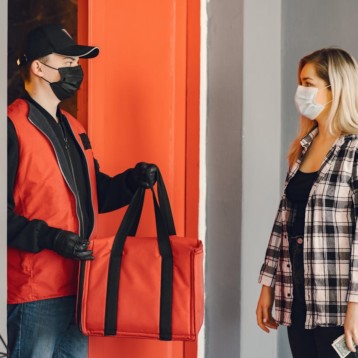But recent studies at Georgetown University in Washington, D.C. have shown that cruciferous vegetables contain a compound that actually reverses cancer causing mutations in the body.
Part of our body’s mechanism for fighting cellular damage is the protein p53. When a cell replicates itself while healing the body, or for normal cell replacement, p53 scans the newly copied DNA strand looking for mutations and other errors. When an error is found, p53 attempts to make repairs, but if a repair cannot be made, the DNA is broken back down into amino acids and DNA replication starts over.
When p53 is inactive, mutations and errors in DNA are allowed to pass by the p53 checkpoint and make their way into a new cell. Then, each cell replicated from that new cell will have the mutated DNA and then each copy from those cells, and on and on, ultimately forming a tumor. Normal p53 proteins are found in all humans and prevent this abnormal cell growth that leads to cancer. Defective p53 has been found in more than half of all cancers.
Where do the vegetables come in? Cruciferous vegetables contain compounds known as isothiocyanates or ITCs. These chemicals deplete defective p53 proteins while leaving healthy p53 alone. Researchers also made an intriguing observation; the depletion of mutant p53 in human cancer cells is accompanied by restoration of the normally functioning p53, which then halts tumor growth.
In the Georgetown report, published in the Journal of Medicinal Chemistry, researcher Xiantao Wang and his colleagues analyzed the effects of ITCs on p53 in a variety of human cancer cells, including lung, breast, and colon cancer. It was found that the most efficient of more than a dozen different structures of ITCs was not one that was naturally occurring, but a synthetic ITC called 2,2-Diphenylethyl. All cruciferous vegetables contain ITC in varying amounts but the most effective naturally occurring ITC was in garden cress, a leafy perennial, followed by that in broccoli sprouts, and then broccoli.
Researchers now see that current cancer treatments and prevention strategies could be improved in the future if drugs are based on natural or custom-engineered ITCs. “ITCs really have the potential for chemoprevention and chemotherapeutic treatments,” said Dr. Anthony J. Di Pasqua, one of the study’s authors. “You can get a decent concentration into people without getting any ill effects.”
TFOT has previously reported on other recent breakthroughs in cancer treatments including the article “Herpes Virus Holds New Hope for Gene Therapy” describing how researchers at Marie Curie Institute in Surrey, England have modified a herpes virus to deliver drugs into many cancer cells at once. Another related TFOT story describes a new method to administer drugs targeted at cancer cells.











